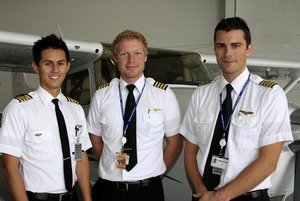Private Pilots Could Fly Without a Medical Certificate
Initial flight training may get a little bit easier for private pilot students.

On April 2nd, the FAA announced that the organization would push forward with the rulemaking process for “Private Pilot Privileges without a Medical Certificate.” The move is a response to a joint effort on behalf of EAA and AOPA to get rid of the medical requirement (or at least lessen the requirements) for general aviation pilots.
AOPA and other industry groups have been advocating for a pilot exemption from a third-class medical certificate for many years. In 2012, AOPA and EAA backed a legislative proposal called the General Aviation Pilot Protection Act that would allow VFR pilots with less than six passengers to fly without a medical certificate.
AOPA says that there is no current safety concern with certain operations in which a medical certificate is not required for the pilot, such as glider or sport pilot operations.
In the past, the FAA has responded to these requests negatively, or not at all. This time, they responded to say that they’d push forward with the rulemaking process to allow private pilots to fly without a medical certificate.
The FAA hasn’t said specifically who would be eligible to fly without a medical, but the title of the announcement – “Private Pilot Privileges without a Medical certificate” – suggests that the new rule, if passed, would apply to private pilots only. It’s likely that the new regulation will mimic the Sport Pilot regulations, in which pilots will be responsible for self-assessment and will be required to hold a valid driver’s license.
The new rules would make it easier and less expensive for new students to begin flying. It would also eliminate the long wait times and costly doctor’s visits for those pilots who have to continuously go through the FAA’s special issuance process for aviation medical certification.




